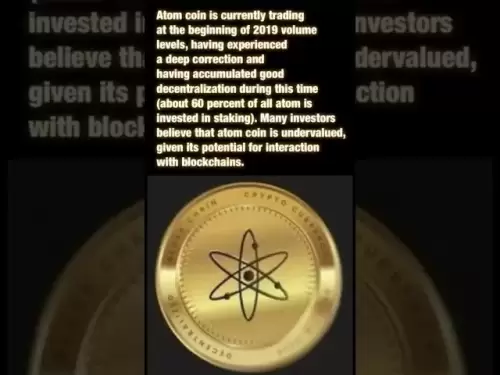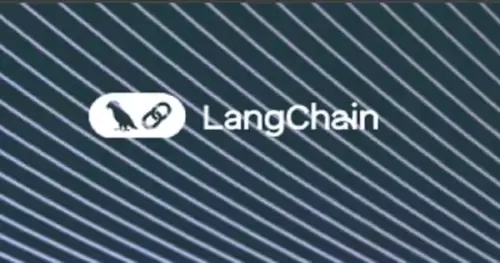 |
|
 |
|
 |
|
 |
|
 |
|
 |
|
 |
|
 |
|
 |
|
 |
|
 |
|
 |
|
 |
|
 |
|
 |
|
Articles d’actualité sur les crypto-monnaies
Restaking: The Narrative Has Moved Fast — from Side Conversations to the Forefront of DeFi Infrastructure
May 01, 2025 at 05:05 pm
The narrative around liquid staking has advanced rapidly. It began with casual conversations among validators and has quickly progressed to become a major topic in Decentralized Finance (DeFi) infrastructure discussions.
According to DefiLlama, major liquid staking protocols now boast over $12 billion in total value locked (TVL), with numerous middleware services aligning their security with Ethereum’s economic base layer.
What started as an idea to enhance capital efficiency for validators has become a significant attempt to reimagine how security is provisioned within decentralized systems.
While liquid staking is quickly gaining traction among crypto participants, institutions, particularly those with multi-year investment horizons and regulatory constraints, still maintain a distance from DeFi.
This isn't due to a lack of interest in the opportunities presented by crypto. Rather, institutions are carefully evaluating the level and type of risk involved in their investments.
Institutions are used to having clear categories for risk, and they have sophisticated models for managing it within each class. In contrast, many DeFi protocols are still in the early stages of development, and their risk profiles are not yet fully understood.
This lack of familiarity with new risk classes and the technical complexity of DeFi protocols can make it difficult for institutions to invest in the space in large quantities. They may also be concerned about the potential for regulatory changes to impact their investments.
However, liquid staking has the potential to change this dynamic and open up new avenues for collaboration between crypto and institutions.
Adding friction where it’s needed most
Most protocols today are focused on reducing risk. But in a composable system like DeFi, we may actually want more friction—at least in the areas where it’s needed most.
For example, consider how new protocols are bootstrapped. They typically require a large initial validator set to process transactions and maintain state. But to attract validators, new protocols must offer excellent terms, which can siphon off operators from existing services. This can destabilize services like oracles, bridges, and data availability layers that are already rendering critical functions for yield optimization.
Now, imagine a scenario where validators can opt into securing new protocols using already-staked assets. This creates a second validation layer that strengthens middleware without bootstrapping entirely new trust networks. It also introduces a second point of slashing, which is absorbed by the service operators.
Unlike traditional validator sets, which are limited in number and compete for capital, this approach aligns existing economic incentives with broader infrastructure needs. Protocols can share security in a composable manner, with slashing conditions, operator sets, and risk parameters customized for each service.
For institutions, this is significant as it signals the beginning of a modular security stack, where exposure can be configured and audited per protocol. It's also interesting that slashing becomes a class of risk—not a red flag.
Slashing is the main blocker for institutional staking
One of the main topics that come up when discussing how to get institutions more involved in crypto is slashing. It's a critical factor for any large-scale capital deployment, especially in the new markets that institutions are exploring.
In simple terms, slashing occurs when a validator commits an offense, such as downtime or malicious activity, and a portion of their staked tokens is slashed as punishment. This is a technical risk that can be covered with service-level agreements (SLAs) and advanced monitoring systems.
However, slashing in liquid staking is segmented. On all major platforms today—from Ankr and Blocknative to Staked and CoinsTag—operators select which services they wish to secure. This allocates slashing to the context of misbehavior, not the entire validator lifecycle.
It’s a crucial distinction. It means slashing is scoped to the service a validator is rendering, be it a stablecoin protocol, a rollup, or a cross-chain bridge.
This is how liquid staking aligns with broader DeFi needs. Instead of new protocols having to "bootstrap" security, they can compose it from existing building blocks.
Institutions may not invest in a new protocol's governance token but will gladly provide liquidity to an overseer, whose role is to attest to the protocol's state. But they’ll only do so if the slashing conditions are defined, and the service operators have the technical capacity to maintain uptime.
After all, institutions are used to having diverse risk classes—credit, equity, commodities, and more. They'll approach slashing as a new class of risk.
Institutions are comfortable with quantifiable risk. They model it in multi-year timeframes and have internal processes for mitigation.
But in nascent DeFi, slashing is often discussed as an all-or-nothing factor. It's a single point of failure in an otherwise composable system.
It stalls capital flows
As we enter a new bull cycle, there's a lot of discussion about capital efficiency. But we can take it a step further.
DeFi is known for its volatility. We have price swings, gas spikes, and liquidation cascades, all of which factor into
Clause de non-responsabilité:info@kdj.com
Les informations fournies ne constituent pas des conseils commerciaux. kdj.com n’assume aucune responsabilité pour les investissements effectués sur la base des informations fournies dans cet article. Les crypto-monnaies sont très volatiles et il est fortement recommandé d’investir avec prudence après une recherche approfondie!
Si vous pensez que le contenu utilisé sur ce site Web porte atteinte à vos droits d’auteur, veuillez nous contacter immédiatement (info@kdj.com) et nous le supprimerons dans les plus brefs délais.
-

-

-

-

-

-

- Aave Prix sous pression: les indicateurs techniques indiquent une élan baissière
- Aug 02, 2025 at 12:04 am
- Aave Price est confronté à des vents contraires baissiers alors que les indicateurs techniques signalent plus loin malgré son leadership Defi. Un rebond est-il possible, ou sera-t-il en rupture des niveaux?
-

- Pingu Token's Wild Ride: Price Rally rencontre l'escroquerie
- Aug 02, 2025 at 12:02 am
- Pengu Token voit un rallye de prix mais soyez conscient de l'escroquerie! Obtenez les dernières informations sur la dynamique du marché du pingou, les escroqueries potentielles et ce que cela signifie pour les investisseurs.
-

-




























































